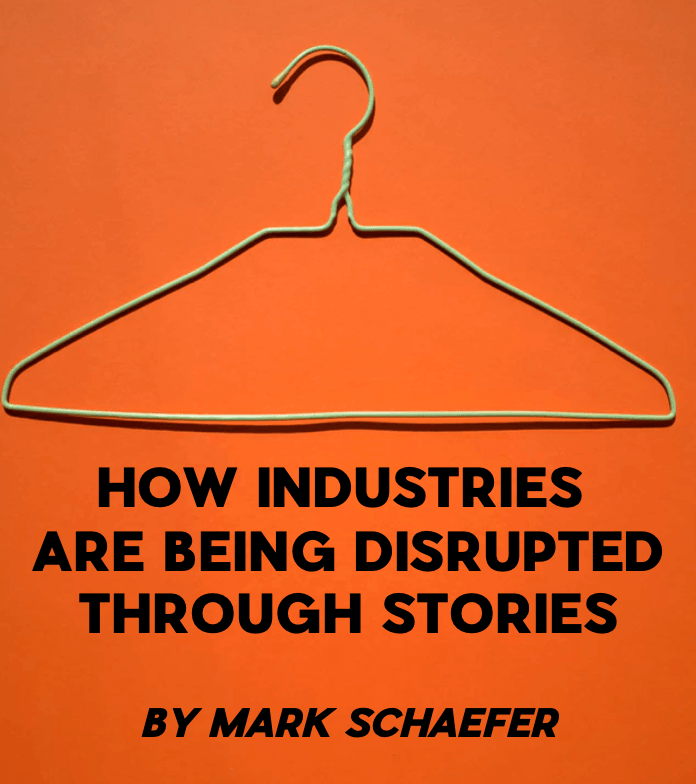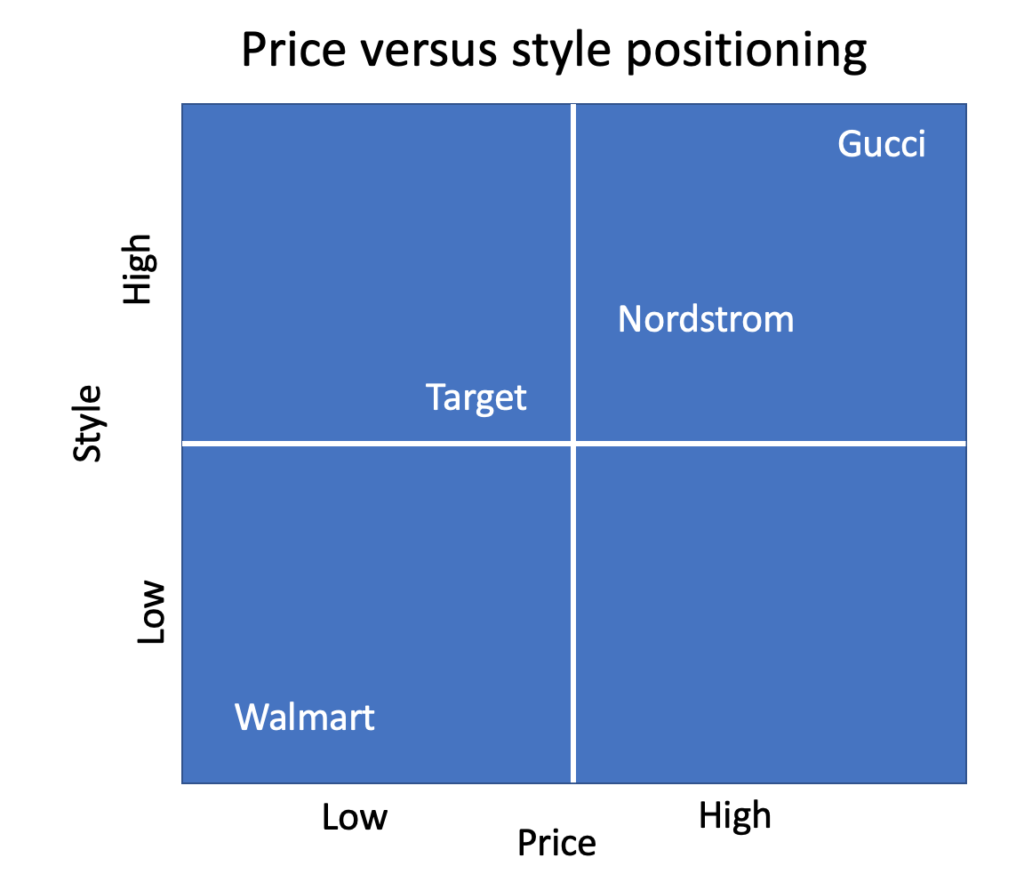
I was recently working with a long-established, traditional US retailer that is being disrupted through stories.
But they didn’t know it.
“This is insane,” the brand manager said in exasperation. “All these new companies have come into our market. They’re selling virtually the same shirts that we are for $70. Our price is $20. How are they getting away with it?”
On one level, he is correct. These clothes are similar in almost every visible way. But he was missing a crucial component. The disrupting brands had a story, and he didn’t.
And people buy stories.
Let’s look at this more closely. How can you use “story” strategically as a disruptive marketing element, and is it sustainable?
The tradition of “position”
A key part of traditional marketing is owning a distinct position in your industry. We could use a simple 2 x 2 matrix to illustrate how a few common clothing retailers might be positioned in the marketplace in terms of style versus price:

This product positioning strategy has always been useful and relevant. Still is. You could do this sort of positioning analysis (using different factors of course) for cars, vacation destinations, soft drinks, and almost anything.
As long as there is a big enough base of customers in a niche, the comfy clothing country club in my example can profitably exist. Somebody who is a fan of Nordstrom is probably not going to buy their clothes at Walmart, for example, and vice versa. The market is nicely carved up.
However …
This traditional product positioning matrix is being disrupted by a new element — “meaning.”
Meaning equals money
In my book Marketing Rebellion, I go into great detail explaining how and why customer loyalty is slipping away. Research shows that across most industries, about 87 percent of our customers “shop around,” a dramatic change from just 15 or 20 years ago.
A primary reason for this trend is that marketers have been preoccupied with technology instead of the emotion needed to connect to a brand.
One of the few ways we have left to earn true loyalty again is to align with customer values. A few examples …
- Patagonia and the environment (“We’re in business to save our home planet.”).
- Everlane and supply chain transparency.
- American Eagle and gun control.
When these companies take a side, they may not please everyone, but the people they do align with buy more, stick with the brand, and pay up to a 25 percent premium.
Disrupted through stories
Let’s get back to my friend selling shirts. He’s getting toasted in the marketplace by disruptors who are not necessarily paying attention to place, product, promotion or positioning (the 4 P’s of marketing). They’ve discovered a new P — purpose.
One of his competitors is taking a strong stand for women’s rights and equal pay. Another is giving a portion of their profits to environmental causes.
So a new type of market positioning is the story of your purpose.
Can my customer adjust? Maybe, maybe not.
You can’t just make up a cause du jour and make it a marketing program overnight. I described this in an earlier post as “woke-washing.”
Purpose, or “cause” marketing has to emerge from a deeply-held company value, something in the very DNA of the operation. And of course that cause has to be aligned with customer values and demonstrated up and down the organization.
The price sensitivity of story
Although my customer is falling behind with their marketing, they have many strengths, including a household brand name, an efficient supply chain, and long-term retail partners.
One question to consider about this new trend of cause or purpose-based marketing is the price-sensitivity of “story.”
There are a lot of people buying $70 shirts because they want to support women’s rights or panda habitats. But what happens when we have a recession those fans lose their jobs? Will they be buying the $70 shirts or the $20 shirts?
A well-established values-based company like Patagonia will make it through a downturn of course. But a new company selling $50 bars of soap made with free-range oatmeal? Probably not.
The outcome remains to be seen, but basic economics would tell us that a high-priced brand built primarily on “story” would be vulnerable in a downturn.
The lesson here is:
- Industries are being disrupted through stories.
- Story is important. Meaning is important.
- Story and meaning probably need to be considered in your marketing mix.
- Don’t overlook the fundamentals of your marketplace that drive the true long-term value of the business and the brand.
Make sense?
 Mark Schaefer is the chief blogger for this site, executive director of Schaefer Marketing Solutions, and the author of several best-selling digital marketing books. He is an acclaimed keynote speaker, college educator, and business consultant. The Marketing Companion podcast is among the top business podcasts in the world. Contact Mark to have him speak to your company event or conference soon.
Mark Schaefer is the chief blogger for this site, executive director of Schaefer Marketing Solutions, and the author of several best-selling digital marketing books. He is an acclaimed keynote speaker, college educator, and business consultant. The Marketing Companion podcast is among the top business podcasts in the world. Contact Mark to have him speak to your company event or conference soon.
Illustration courtesy Unsplash.com


